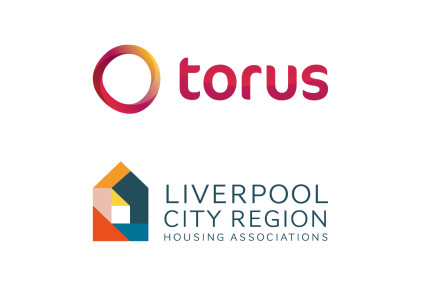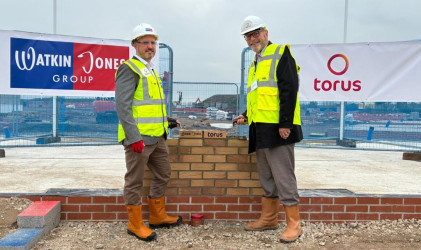Torus’ Assessment of Affordability of Housing in Liverpool report reveals tenants with lowest incomes spending most on rent
09 September 2024
Torus’ Assessment of the Affordability of Housing in Liverpool report has found renters in areas with the lowest incomes are living in the least affordable parts of the city.
We commissioned global property agent Avison Young to assess the affordability of housing and are now using this insight to shape our plans so we can build more properties for social rent and prioritise places where financial pressure on households is greatest.
The report found the average net household income in the Toxteth area before housing costs is £25,636 and with an average private rental of £890 per month, it means 42% of income is spent on rent.
Using a benchmark that housing costs should be no more than 30% of income to align more closely with Local Housing Allowance rates, residents here pay 12% more and over double the 20% Liverpool social rent cap.
And research shows people in parts of Kirkdale spend 37% of their income on rent.
The findings also reveal average rents in Liverpool have grown by 48% in the past five years compared to 39% in the rest of England with rent increases far exceeding the rise in household incomes over the same period.
The report concludes there is a serious shortage of genuinely affordable housing across Liverpool.
Steve Coffey, Group Chief Executive at Torus, said:
“The report findings are startling and underline the need for more genuinely affordable homes across Liverpool, especially in neighbourhoods where household incomes are lower than the city average.
“Paying 42% of your income on housing is unsustainable and leaves people really struggling to afford to eat, pay bills and heat their homes.
“We need to increase the supply of genuinely affordable housing especially for people with the lowest household incomes and to do this we need a higher amount of real public subsidy to support the level of investment that housing associations like Torus make when building urgently-needed new homes.
“Organisations like ours need a combination of more grant, cheaper land or more cost-efficient construction to replace the homes we build for ‘Affordable Rent’ - which is still 80% of private rents and too expensive for so many - with social rent, the most affordable tenure of all.”
Torus’ Assessment of the Affordability of Housing in Liverpool report also found:
- 14,932 people registered on Liverpool’s waiting list for social housing - 3% of the city’s population
- Over the past 10 years, average residential prices in Liverpool have grown by 69% compared to 46% in England
- Property prices in Liverpool are growing quickest at the lower quartile of the market making it harder for the lowest income households to afford to live
Torus says a long-term, multi-organisational partnership approach is needed given the scale of the problems identified.
“We need to change the way the social housebuilding sector operates to minimise the impact of high land values and construction costs while building at volume with greater efficiency,” adds Mr Coffey.
“By creating and adopting a city-wide policy with partners such as housing associations, funding bodies, delivery organisations and local authorities we can deliver this ambition.
“Competition and scarcity of land only serves to inflate prices and ultimately rents. We also need to better demonstrate how greater value for money can be achieved to all by building more genuinely affordable homes.
“Housing has incredibly powerful implications that can save the public purse significant money and give people a home that provides an affordable foundation to live better lives in places that will prosper.”
Torus’ report also found while Liverpool’s population grew at below the national average for two decades, the next 20 years will see it expand by 13% compared to 10% in the rest of England.
This is in addition to the city’s population being younger than the national average.
“Demand in Liverpool is only going to get higher with the population growing and 15,000 people on the waiting list for social housing so we need a different approach that will allow us to build the necessary number of homes that are genuinely affordable that can be let at social rent levels,” said Mr Coffey.
“We want young people – the future of the city – to stay in Liverpool but they are facing the biggest challenges particularly in getting onto the property ladder.”
Stephen Cowperthwaite, Managing Director for Liverpool at Avison Young UK, said:
“Housing affordability is a significant challenge nationally, but with different factors at play at local levels, there isn’t a one-size-fits-all solution.
“To enable us to examine the specific dynamics of the housing market in Liverpool, we took a holistic approach, considering local demographics and wider housing market pressures, as well as assessing the existing supply in the city.
“By looking at these factors and breaking the city up into six submarket areas, we were able to see what affordability looks like across a range of rent-to-income ratios.
“With Liverpool’s population set to rise at a faster rate than average over the next 20 years, it is clear that more quality and affordable housing is needed, and reports such as this provide strategic guidance on where that investment should be.”
Read the executive summary here, or the full report here.



